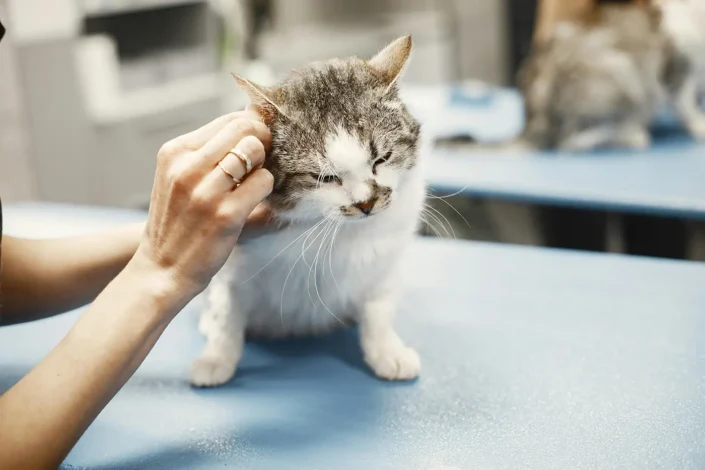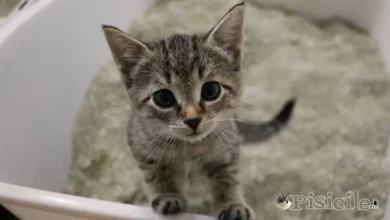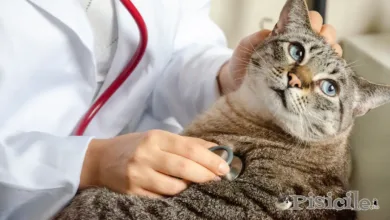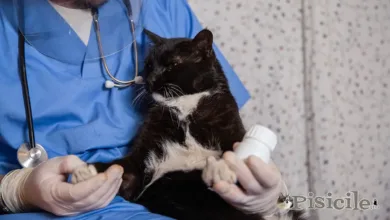
Cats are known for their elegance, but also for the sensitivity of their delicate skin. It's quite a long list of the most common skin problems in cats. From parasites such as fleas, ticks or mites, to bacterial or fungal infections, allergies, stress, injuries, or even hormonal imbalances, there is a wide range of factors that can affect the health of a cat's skin.
In a previous article we talked about what it is and how it can be treated auricular scabies in cats. In this article you will see what are the early signs of skin problems in cats and how you can give them the comfort and care they need.
Subject
Main skin problems in cats and treatment
One of the most common skin problems in fish is caused by allergic skin reactions. In a previous article I wrote about how they can be identified, what are the factors of cat allergies and how they can be treated.
Read: Cat skin allergies. Causes and Treatment.
Abscess in cats
Abscess is one of the most common skin problems in cats. An abscess is a painful collection of pus that forms where the cat has been bitten or stung. Initially, the abscess manifests as a firm swelling that later becomes soft and may rupture, giving rise to purulent discharge. These injuries are often the result of altercations with other cats or animals.
Abscesses are often found on the back half of the cat's body and abdomen, and the tail is an area commonly affected by bites. An effective way to prevent abscesses is to keep your cat indoors. If the cat has external access and develops an abscess, it is crucial to remove the accumulated pus, either through surgery or drainage. If the abscess has formed around a foreign object left in the cat's body, it must be removed. After the abscess is drained, antibiotic treatment is necessary to prevent further infections. The antibiotic will be prescribed by the veterinarian according to the type of bacteria involved and the duration of the treatment will be determined by the doctor according to the severity and location of the abscess.
Auricular mange, cause of skin problems in cats
Auricular mange in cats is a condition that manifests itself with symptoms such as frequent head shaking, excessive scratching of the ears, and the presence of a brown, waxy discharge in the ear canal. This condition is caused by a microscopic parasite, which in severe infection can be seen with a magnifying glass as moving whitish dots on the surface of the earwax.
All cats, at some point, can suffer from auricular mange, but the most exposed are puppies and young cats. The infection can be transmitted from one cat to another, the parasite migrating from one body to another or on various parts of the same body, such as the neck, the inside of the legs or the base and tip of the tail. The parasite feeds on earwax, and its presence can cause irritation and excessive earwax production, creating an environment conducive to their reproduction.

For more details about ringworm, see the article: Auricular mange in cats. The cause of ear scratching.
The treatment of auricular scabies consists of applying drops specially formulated for this purpose and cleaning the ear with a cleansing disk. The duration of treatment may vary depending on the severity of the infection, with up to two weeks being required to achieve the desired results.
Acne is one of the most common skin problems in cats
Acne in cats is manifested by the appearance of blackheads, also known as corns, especially on the underside of the chin and around the lips. This condition can be caused by using plastic or rubber dishes for the cat's food and water.
In severe cases of acne, it is recommended to use an anti-seborrheic shampoo containing benzinol peroxide. This compound has the role of reducing the amount of oils secreted by the cat's skin, contributing to the relief of the condition. Omega 3 and Omega 6 dietary supplements can also be beneficial in managing acne in cats by providing the skin with the nutrients it needs to maintain its natural health and balance. It is important to consult a veterinarian for diagnosis and specific treatment recommendations based on the severity of acne and your cat's individual needs.
Contact dermatitis in cats
Contact dermatitis in cats is manifested by the appearance of red bumps and itching on the skin. This condition occurs when the cat's skin comes into contact with a chemical or other irritant, causing inflammation and discomfort. Rubber or plastic dishes from which the cat eats can also cause contact dermatitis.
To prevent contact dermatitis, it is recommended to keep cats away from areas where you use chemicals and feed them using glass, stainless steel or lead-free ceramic dishes. These materials reduce the risk of irritation and allergic reactions on the cat's skin, helping to maintain its health and comfort.
Psychogenic alopecia. Skin problems in cats
Psychogenic Alopecia in cats is characterized by thinning fur in a stripe on the back or abdomen caused by compulsive self-grooming. Stress is often the main factor driving this compulsive grooming behavior. Treatment involves reducing the stress level of the affected cat by using cat-specific pheromone diffusers, creating a calm environment, and redirecting the cat's nervous energy through playful activities.
In severe cases of psychogenic alopecia in cats, veterinarians may recommend treatment with anti-anxiety medications to help manage the animal's anxiety and compulsive behavior. It is important to address both the causes and symptoms of this condition to ensure your cat's well-being and comfort.
Read about alopecia: Alopecia or cat baldness on the belly and other parts of the body
Food allergy dermatitis in cats
Skin problems in cats also cause food allergy dermatitis. This is a condition where some cats show an increased sensitivity to certain ingredients or preservatives in their food. This sensitivity can cause itching in the head, neck and back area, accompanied by inflammation of the eyes. During the molting period or in the case of frequent injuries caused by bites and scratches, the symptoms of food allergy dermatitis can become even more pronounced.
Treatment for food allergy dermatitis mainly involves eliminating the ingredients that trigger the allergic reaction from the cat's diet. Some veterinary drugs, such as steroids, may be recommended to reduce the inflammation and itching associated with dermatitis. It is important to consult your veterinarian to identify and eliminate the sources of food allergies and establish an appropriate treatment plan to ensure your cat's comfort and health.
Flea allergic dermatitis in cats
Allergic flea dermatitis in cats is a condition in which some cats develop itchy bumps, usually located above the base of the tail, on the back, hind legs and inner thighs. Even though many cats can have fleas without showing any reaction, sensitive cats can experience severe itching from a single flea bite.
The best way to prevent allergic dermatitis caused by fleas is to make sure that your cat is not infested with these parasites. Spot-on treatments available in veterinarians' offices are usually the most effective in controlling flea infestations. However, there are alternative, chemical-free methods that can be effective when used correctly. It is important to consult your veterinarian to identify the most appropriate treatment and prevent the recurrence of allergic flea dermatitis, thus ensuring the comfort and health of your cat.
Ringworm in cats
Ringworm causes skin problems in cats. Ringworm is a fungal infection that can be highly contagious to other animals and even humans. Symptoms of this condition include round spots on the cat's skin where the fur falls in the center and a characteristic red ring may appear on the periphery. Some cats may only have broken hair on the face and ears.
Treatment of ringworm in cats requires the intervention of the veterinarian, who will prescribe appropriate antifungal drugs. It is also important to ensure a clean and hygienic environment for the cat by excessive cleanliness in the environment in which it lives. It is essential to start treatment as soon as possible to prevent the infection from spreading and to promote a quick and effective recovery for your cat.
Oily cat tail
Oily tail in cats is a condition where the glands near the tail secrete excess oils, causing a waxy, rancid-smelling brown area that runs from the tip of the tail to the base of the tail. This condition is especially common in unneutered males, who can mark their territory, but it can also affect neutered cats or neutered cats.
Treatment of oily tail in cats may involve castration, if necessary, and proper washing of the area twice a day with an anti-seborrheic shampoo. This type of shampoo helps break down excess oils and maintain proper hygiene of the affected area. It is important to consult your veterinarian to determine the most appropriate treatment and ensure your cat's comfort and health.
Sunburn in cats
Sunburn in cats can be a serious problem. Light colored cats and hairless breeds such as the Sphynx are very susceptible to sunburn. It is important to protect them from direct sunlight, especially between 10am and 4pm, to reduce the risk of sunburn and minimize the chances of developing long-term problems such as skin cancer. skin, including melanoma.
Limiting sun exposure and providing shaded areas or adequate sun protection, such as special sunscreens for cats, can help prevent sunburn and related complications. It is essential that we pay attention to our cat's sun protection needs to ensure their health and comfort during periods of sun exposure.
These are the most common skin problems in cats, but they are not the only ones. If you notice a change in the appearance of the cat's skin or fur, it is recommended to take the cat to a veterinary office for a specialist consultation. The veterinarian will determine the cause of the cat's skin problems and administer the appropriate treatment.



